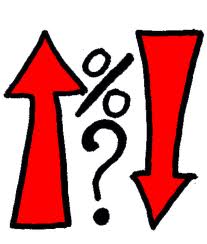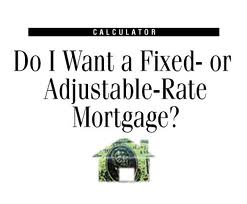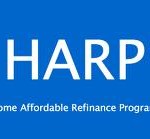May 23, 2012 – Washington D.C. – Small Business Panel and Small Entity Representatives (SER’s) meet to discuss CFPB’s Proposals Under Consideration
The Meeting’s Outcome Flat fees – YES!!!???
Real Estate Brokers – Might be welcome to wage control for you, too!!!
CFPB listening – NO!! Industry Has to Act – Yes!
The meeting makes it is clear that amending the Dodd Frank Act is the only way to avoid a January 2013 train wreck!
The Box Score as of May 23, 2012 –
Comrades for Penalizing Brokers (CFPB) – 1; Small Business – 0
SIGN THE PETITION TO AMEND DODD FRANK
go to: http://www.change.org/petitions/petition-to-amend-the-dodd-frank-act and sign the petition – it may be your only hope! Then circulate the petition to 10 or more people you care about.
Read on to learn more about why you better care and act!
On Wednesday in a building on the White House compound about seventeen selected small entity representatives (SER’s) sat with representatives of the CFPB, Office of Management and Budget and the SBA’s Office of Small Business Advocacy. According to information shared by one of the broker representatives: five of those attending were mortgage brokers. The others were from community banks, credit unions and non-profit organizations.
This meeting is one of the required steps in the CFPB’s rulemaking process. This precedes its upcoming notice for proposed rule making which will implement specific mortgage or mortgage related provisions of the Dodd Frank Act.
On May 9th the CFPB posted, quietly and without public announcement in the Newsroom area of its website, a release that described the process. The information in the release conflicted with the information in its Outline of Proposals but so few picked up on the event that except for some media attention, no one even knew there was a six page instruction sheet for the people who attended the May 23rd meeting. The information sheet listed the questions the Small Business Panel was seeking input on. But, no one knew they could send answers to the Bureau.
If you want to read their questions and send your answers you can do so by going to www.immaag.com and using the link on the home page to read the well hidden document and get the email address to send your answers.
The CFPB has not reached out beyond the selected SER’s to notify industry about what is happening or to let others know that six page document exists. Answers to the questions in those 6 pages were to form the foundation of the May 23rd D.C. meeting.
Your cause for concern!
There are several things which should cause concern to everyone who cares about housing recovery, free markets, and their future to serve as a mortgage professional, real estate professional or even to be an American adult who aspires to own, buy, rent, sell, invest in or refinance real estate:
1) Nothing in any document prepared by the CFPB indicates they are listening to input they are receiving from anyone. They are ignoring input about how wrong the Dodd Frank Act is in its approach. They do not appear to care about proof that its “corrections” just like the ones in the FRB’s loan originator compensation rule will harm or already are harming consumers and industry. In fact, if the initial report from one of the broker participants at the meeting is true, not only is the Bureau not listening, it plans to be even more rigid in its rule making and appears bent on over-stepping its authority just as the Federal Reserve Board did before it!
2) The May 23rd meeting implied that the “flat fee” approach to origination fees is real and it is not just an additional fee allowed to provide flexibility in creditor paid transactions which is enabled by the Bureau’s “exemption authority”. It appears the CFPB may believe it should be the only compensation. Is this true? Frankly, it is impossible to tell from the conflicting information contained in the two May 9th postings on the CFPB’s website and reports from the meeting. But, at least one SER at the Wednesday meeting is absolutely sure that is what the group took away with it.
3) In discussing flat fees the same SER came away with the conclusion that even though Real Estate Brokers are exempt from the CFPB’s supervision (See Section 1027 of the Dodd Frank Act) the Small Business Panel representative implied in the discussion of affiliated businesses that flat fees are being considered for real estate commissions. NAR – what do you think about that?
The conflicting information between the CFPB’s own written documents, the confusion about what the Dodd Frank Act requires or allows, and the uncertainty about what the CFPB intends to do should serve as a strong motive for you
to act and act now!
If the CFPB repeats the Federal Reserve Board’s approach to its notice for proposed rule making, even thousands of comments will not de-rail what appears to be a runaway train headed directly at you and every American who aspires to be involved in owning real estate — if that is the case you have only one seriously meaningful way to stop this assault on you and your customers –
You must support the initiative to amend the Dodd Frank Act – you must step up, sign and circulate this petition.
Go to: http://www.change.org/petitions/petition-to-amend-the-dodd-frank-act and sign it TODAY then share it with 10 friends and so on.
Yes, we must still respond to the inevitable notice for proposed rule making. But the only sure way to prevent what appears to be an act by the Comrades for Penalizing Brokers (CFPB) to decimate your business and harms millions of consumers is to take away their authority to do it.
Act TODAY! And help this go viral — tell everyone you know to Act.
The petition is going to be shared with the Congress in June. It has over 5,200 signatures today but it needs 100 times that. We have a chance to stop the CFPB by amending the Act that gives them what they think they have to do. But only you can make it happens and it only takes seconds and no money!
Don’t put this off or think someone else will do it!
If you don’t do it, no one will!






